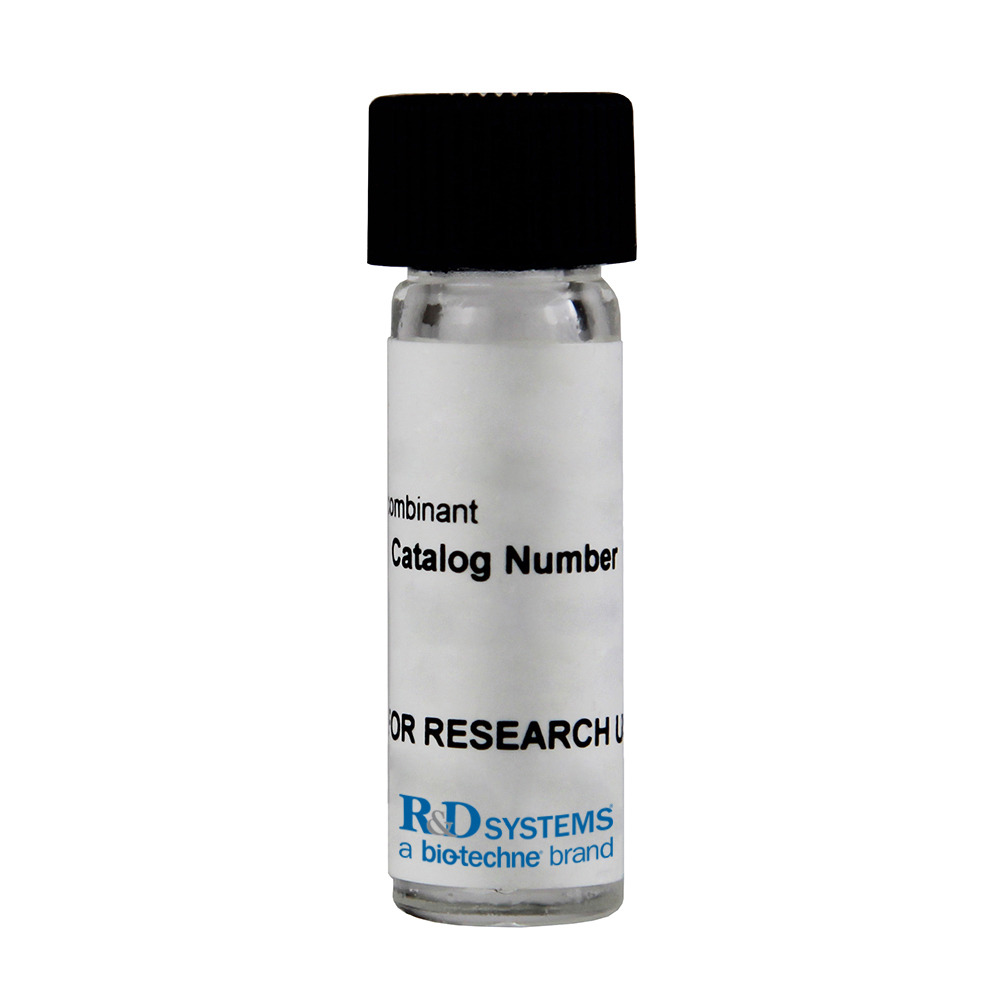Recombinant Human CL-K1/COLEC11 Protein, CF
R&D Systems, part of Bio-Techne | Catalog # 5025-CL

Key Product Details
Product Specifications
Source
Gln26-Met271, with a C-terminal 6-His tag
Purity
Endotoxin Level
N-terminal Sequence Analysis
Predicted Molecular Mass
SDS-PAGE
Activity
Formulation, Preparation and Storage
5025-CL
| Formulation | Lyophilized from a 0.2 μm filtered solution in PBS and NaCl. |
| Reconstitution |
Reconstitute at 100 μg/mL in sterile PBS.
|
| Shipping | The product is shipped at ambient temperature. Upon receipt, store it immediately at the temperature recommended below. |
| Stability & Storage | Use a manual defrost freezer and avoid repeated freeze-thaw cycles.
|
Background: CL-K1/COLEC11
Collectins constitute a family of C-type lectins that recognize molecular patterns expressed on pathogens. Members of this glycoprotein family contain an N-terminal domain, a collagen-like domain, a neck region, and a C-terminal carbohydrate recognition domain (CRD). Collectins are typically secreted molecules, although CL-P1 is membrane bound and CL-L1 is found in the cytoplasm (1 - 3). Collectin kidney 1 (CL-K1), also known as collectin subfamily member 11 (COLEC11), is a 37 kDa collectin that circulates in the blood (4, 5). Alternative splicing may generate multiple isoforms with deletions or substitutions in the N-terminal and collagen-like domains (6). CL-K1 is widely expressed, notably in renal proximal tubules, bronchial glands, and gastrointestinal mucosa (5). It associates into disulfide-linked oligomers and preferentially interacts with fucose residues in a calcium-dependent manner (4). Mature human CL-K1 shares 93% amino acid sequence identity with mouse and rat CL-K1. Within the CRD, human CL-K1 shares 55% aa sequence identity with CL-L1 and 26% - 33% aa sequence identity with collectins CL-P1, MBL, SP-A, and SP-D.
References
- Gupta, G. and A. Surolia, 2007, Bioessays 29:452.
- van de Wetering, J.K. et al., 2004, Eur. J. Biochem. 271:1229.
- Holmskov, U. et al., 2003, Annu. Rev. Immunol. 21:547.
- Keshi, H. et al., 2006, Microbiol. Immunol. 50:1001.
- Motomura, W. et al., 2008, J. Histochem. Cytochem. 56:243.
- SwissProt # Q9BWP8.
Long Name
Alternate Names
Gene Symbol
UniProt
Additional CL-K1/COLEC11 Products
Product Documents for Recombinant Human CL-K1/COLEC11 Protein, CF
Product Specific Notices for Recombinant Human CL-K1/COLEC11 Protein, CF
For research use only
